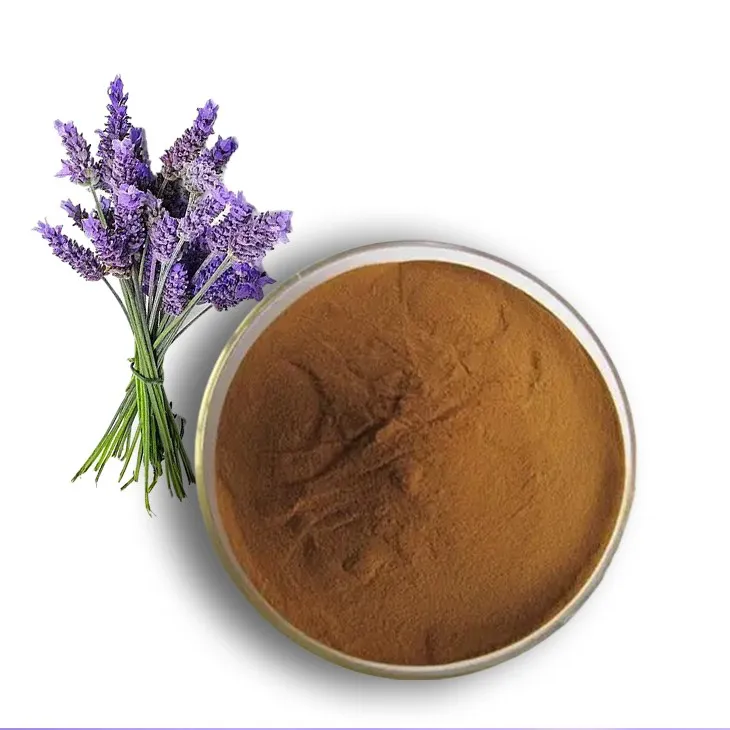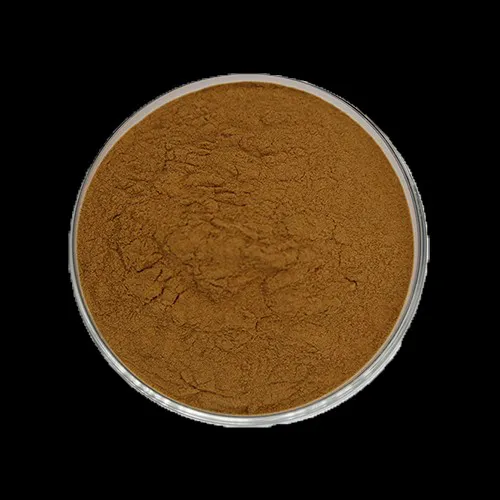- 0086-571-85302990
- sales@greenskybio.com
Organic supercritical CO2 extraction of lavender extract.
2024-11-29

1. Introduction
Lavender, a well - known and beloved plant, has been used for centuries for its various beneficial properties. The extraction of Lavender Extract has evolved over time, and one of the most advanced and environmentally friendly methods is the supercritical CO2 extraction. This method has gained significant attention in recent years due to its ability to produce high - quality, organic Lavender Extract that retains the plant's natural essence.

2. Supercritical CO2: A Unique Solvent
Supercritical CO2 is a state of carbon dioxide where it has properties between a gas and a liquid. At supercritical conditions (above its critical temperature of 31.1 °C and critical pressure of 73.8 bar), CO2 exhibits enhanced solubility and diffusivity. This allows it to penetrate deep into the lavender matrix during the extraction process.
Unlike traditional solvents such as hexane or ethanol, supercritical CO2 is non - toxic, non - flammable, and easily removed from the extract. It also has a relatively low critical temperature, which is beneficial for the extraction of heat - sensitive compounds in lavender.

3. The Extraction Process
3.1. Preparation of Lavender
The first step in the supercritical CO2 extraction of Lavender Extract is the proper preparation of the lavender material. The lavender is typically harvested at the optimal time when the concentration of desired compounds is at its peak. It is then dried and ground to an appropriate particle size.
3.2. Extraction Chamber
The prepared lavender is placed in the extraction chamber. Supercritical CO2 is then pumped into the chamber at the appropriate pressure and temperature conditions. The CO2 acts as a solvent, dissolving the desired compounds from the lavender.
3.3. Separation
After the extraction, the supercritical CO2 - laden with the extracted compounds - is passed into a separation chamber. Here, by changing the pressure and temperature conditions, the CO2 reverts to a gaseous state, leaving behind the concentrated lavender extract. The recovered CO2 can be recycled and reused in the extraction process, which further enhances the environmental friendliness of this method.

4. Environmental Advantages
One of the major advantages of supercritical CO2 extraction for lavender extract is its environmental friendliness. As mentioned earlier, CO2 is a non - toxic and non - flammable gas. It does not produce harmful waste products like some traditional extraction solvents.
Additionally, the ability to recycle and reuse CO2 reduces the overall carbon footprint of the extraction process. This is in line with the growing demand for sustainable and green extraction methods in the industry.
5. Quality of the Extracted Lavender Extract
The lavender extract obtained through supercritical CO2 extraction is of high quality. It maintains the natural aroma of lavender, which is crucial for applications in the fragrance and aromatherapy industries.
Moreover, the extraction process helps in preserving the therapeutic properties of lavender. The extract is rich in various bioactive substances such as terpenes, esters, and other compounds that are known for their relaxation, skin - health - promoting, and stress - reducing effects.
6. Composition of Lavender Extract
Terpenes are a major component of lavender extract. They contribute to the characteristic smell of lavender and also have various biological activities. For example, linalool, a terpene present in lavender, has been shown to have calming and relaxing effects on the body and mind.
Esters are another important group of compounds in lavender extract. They are responsible for the sweet and floral aroma of lavender and also play a role in its therapeutic properties.
In addition to terpenes and esters, lavender extract also contains other bioactive substances such as flavonoids and phenolic acids, which contribute to its antioxidant and anti - inflammatory properties.
7. Applications of Lavender Extract
7.1. Aromatherapy
In aromatherapy, lavender extract is widely used for its relaxation and stress - relieving properties. It can be used in diffusers, massage oils, and bath products to create a calming and soothing environment.
7.2. Cosmetics and Skin Care
The beneficial effects of lavender extract on skin health make it a popular ingredient in cosmetics and skin care products. It can help in moisturizing the skin, reducing inflammation, and promoting wound healing.
7.3. Food and Beverage
Lavender extract is also used in the food and beverage industry, mainly for its flavor and aroma. It can be added to teas, desserts, and confectionery products to impart a unique lavender flavor.
8. Conclusion
The supercritical CO2 extraction of organic lavender extract is a highly effective and environmentally friendly method. It offers a way to obtain high - quality lavender extract that is rich in bioactive substances and retains the natural properties of lavender. With the increasing demand for natural and sustainable products, this extraction method is likely to gain even more importance in the future, further exploring the potential of lavender extract in various industries.
FAQ:
What are the advantages of supercritical CO2 extraction for lavender extract?
Supercritical CO2 extraction has several advantages for lavender extract. Firstly, it can penetrate deep into the lavender matrix to extract the desired compounds effectively. Secondly, it is more environmentally friendly compared to traditional extraction methods. It also helps in maintaining the natural aroma and therapeutic properties of lavender.
What substances are present in the organic lavender extract obtained by supercritical CO2 extraction?
The organic lavender extract obtained by supercritical CO2 extraction is rich in terpenes, esters, and other bioactive substances.
Why is the lavender extract obtained by supercritical CO2 extraction popular in various industries?
The lavender extract obtained by supercritical CO2 extraction is popular in various industries because it contains bioactive substances such as terpenes and esters that are beneficial for relaxation, skin health, and stress reduction.
How does supercritical CO2 extraction maintain the properties of lavender?
Supercritical CO2 extraction is a gentle process. It does not use harsh chemicals or high - heat conditions that can damage the natural compounds in lavender. So, it can maintain the natural aroma and therapeutic properties of lavender.
Is supercritical CO2 extraction a cost - effective method for lavender extract?
While the initial setup cost for supercritical CO2 extraction equipment can be relatively high, in the long run, it can be cost - effective. This is because it is highly efficient in extracting the desired compounds, and the resulting high - quality extract can command a good price in the market. Also, its environmental friendliness may lead to potential savings in terms of regulatory compliance and waste management.
Related literature
- Supercritical Fluid Extraction of Lavender Essential Oil: Process Optimization and Chemical Composition Analysis"
- "Comparative Study of Lavender Extracts Obtained by Supercritical CO2 and Conventional Extraction Methods"
- "The Potential of Supercritical CO2 - Extracted Lavender Extract in Cosmetic Applications"
- ▶ Hesperidin
- ▶ citrus bioflavonoids
- ▶ plant extract
- ▶ lycopene
- ▶ Diosmin
- ▶ Grape seed extract
- ▶ Sea buckthorn Juice Powder
- ▶ Beetroot powder
- ▶ Hops Extract
- ▶ Artichoke Extract
- ▶ Reishi mushroom extract
- ▶ Astaxanthin
- ▶ Green Tea Extract
- ▶ Curcumin Extract
- ▶ Horse Chestnut Extract
- ▶ Other Problems
- ▶ Boswellia Serrata Extract
- ▶ Resveratrol Extract
- ▶ Marigold Extract
- ▶ Grape Leaf Extract
- ▶ blog3
- ▶ blog4
-
100% Pure Natural Mulberry Leaf Extract.
2024-11-29
-
100% Pure Natural Cactus Extract.
2024-11-29
-
Genistein Manufacturers from China.
2024-11-29
-
Chinese Clove Powder Factory.
2024-11-29
-
Uridine-5'-monophosphate Disodium salt
2024-11-29
-
Cat Claw Extract
2024-11-29
-
Garcinia Cambogia Extract
2024-11-29
-
Red Wine Extract
2024-11-29
-
White Peony Extract
2024-11-29
-
Lemon Balm Extract
2024-11-29
-
Aguaje Extract
2024-11-29
-
Scutellaria Extract
2024-11-29
-
Bamboo Leaf extract
2024-11-29
-
Diosmin
2024-11-29





















